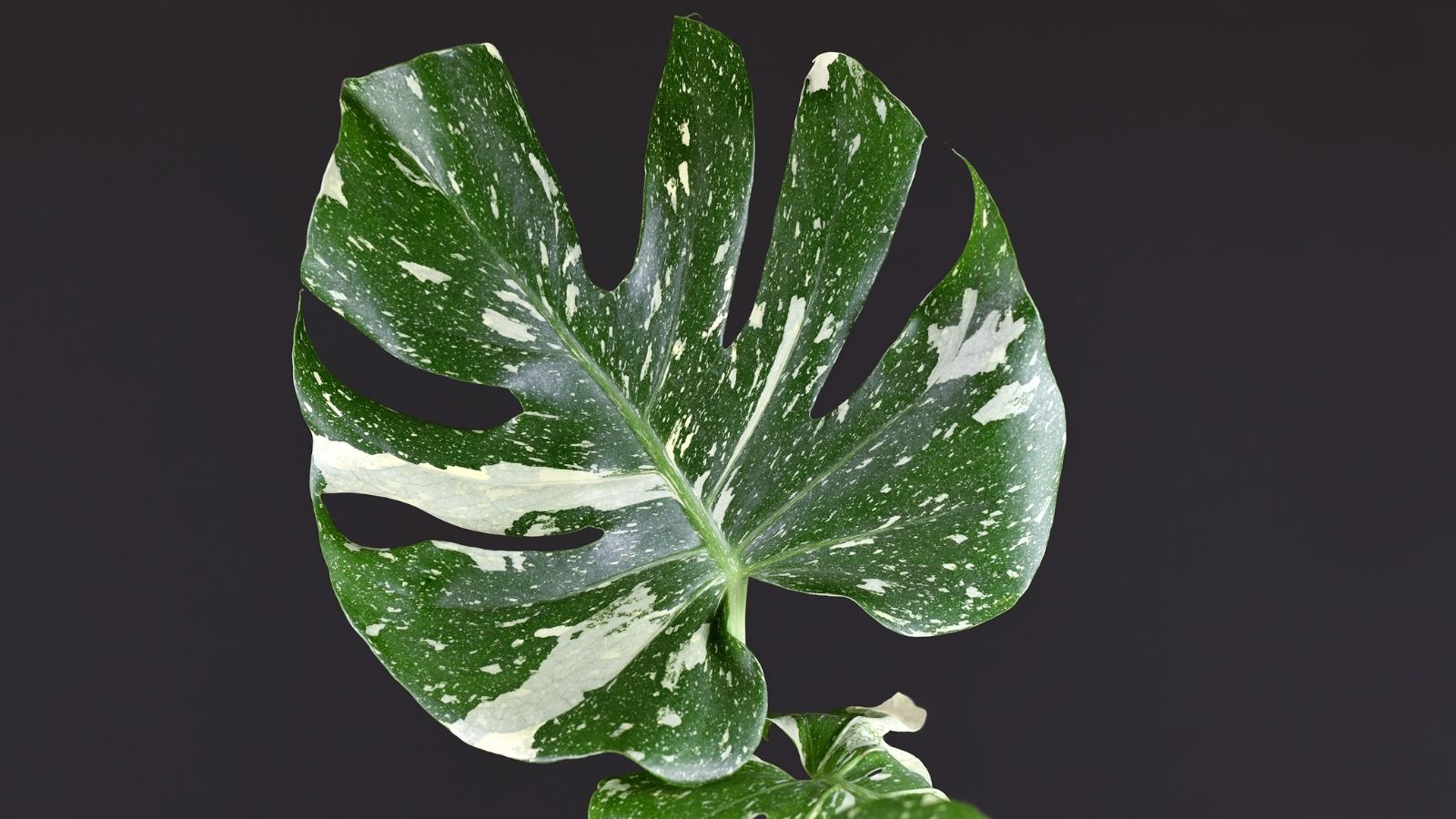Variegated plants are making a splash on social media and are the latest houseplant obsession for many plant parents around the world. The beautiful Thai constellation monstera may be one of the most sought-after variegated plant varieties out there, and is at the top of most monstera lovers’ wishlists!
Named for the lab in Thailand that created it, the Thai constellation is a cultivar of the classic monstera deliciosa. Its leaves are the same size and shape as the iconic deliciosa, but the typical dark green is speckled and splashed with white and cream!
Here’s our guide to finding a Thai constellation monstera and caring for one once you’ve got it.
How to Buy and Care for a Thai Constellation Monstera
At the time of this writing, there are no official growers in the United States, and the Thai lab that created this cultivar supplies plants to buyers around the world. But for most people, that’s a long way for a delicate plant to travel and importing plants can get complicated.
The best way to get your hands on a Thai constellation monstera is to get a cutting through private buyers in your country. We suggest searching “Thai constellation monstera” on Etsy and carefully reading reviews on any shops that come up in your search.
It’s also a good idea to set up keyword alerts on eBay so that if a Thai constellation becomes available, you’ll be the first to know! Here’s how to do this.
You can also search “Thai constellation monstera for sale” on Google to see if other online plants have any cuttings or even rooted plants available, and be sure to read ratings and reviews from other buyers to make sure the shop is selling quality products and shipping them properly.
Facebook Marketplace and your local Craigslist are also good resources to try!
You may experience some sticker shock when searching for a Thai constellation monstera. Even cuttings can sell for hundreds of dollars because these plants are rare, in high demand, and often difficult to care for.
When you do find a cutting or rooted plant to buy, make sure you get a picture of the actual plant you’re buying.
It’s a good idea to get a cutting with a decent amount of green because those leaves will have more chlorophyll and therefore a better chance of survival after being shipped and replanted.
Leaves that are mostly or fully white are beautiful, but they don’t make good cuttings. Buy a cutting with more green. It will put out more leaves later, some of which will hopefully have even more variegation!
How to Care for a Thai Constellation Monstera
Plenty of indirect sunlight
The biggest thing to remember about Thai constellation monsteras (and any variegated plant, really) is that the variegation is due to a mutation that means certain leaves will produce less chlorophyll. This mutation is beautiful, but not exactly a boon to the plant because chlorophyll is necessary in photosynthesis, the process by which plants turn sunlight into energy.
So less chlorophyll = less energy. In variegated plants, the green parts of the leaves have to work extra hard to support the white and cream parts that do not aid in photosynthesis.
This means that your Thai constellation will need very consistent bright, indirect light. Make sure to place your monstera near a bright, preferably east- or south-facing window where it will get lots of light but never directly in the sun’s rays. This will help provide the plant with plenty of sunlight to convert to energy without scorching the leaves. (Variegated plants may be more prone to this.)
Humidity
Your Thai constellation monstera will also need plenty of humidity to keep its leaves supple and healthy! Unless your home is quite humid, try setting your monstera on a pebble tray (fill a shallow tray with pebbles and water, and place the plant—pot and all—on top. Don’t let the soil or roots touch the water). This will create some humidity around your plant as the water evaporates. You can also set up a nearby humidifier.
Fertilizer
Be sure to provide your Thai constellation monstera with the right nutrients to support a healthy root system, sturdy stems, and lots of new leaf growth! Monstera Plant Food is the perfect choice because it’s specially formulated for monsteras and gentle enough to use with each watering, so you don’t even have to remember a schedule!
While variegated monsteras have less wiggle room in their light, humidity, and fertilizer needs, care is much the same as with non-variegated monsteras. Read our top monstera care guides here!
How to Care for a Monstera Indoor Plant
The Best Monstera Moisture Meter: How to Use a Moisture Meter to Water Your Monstera





